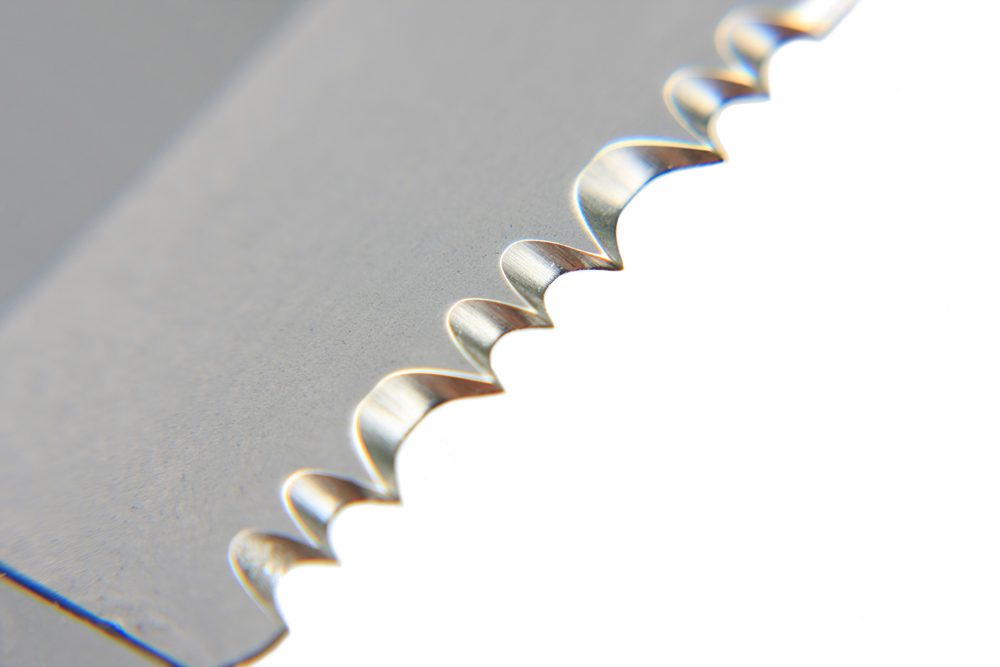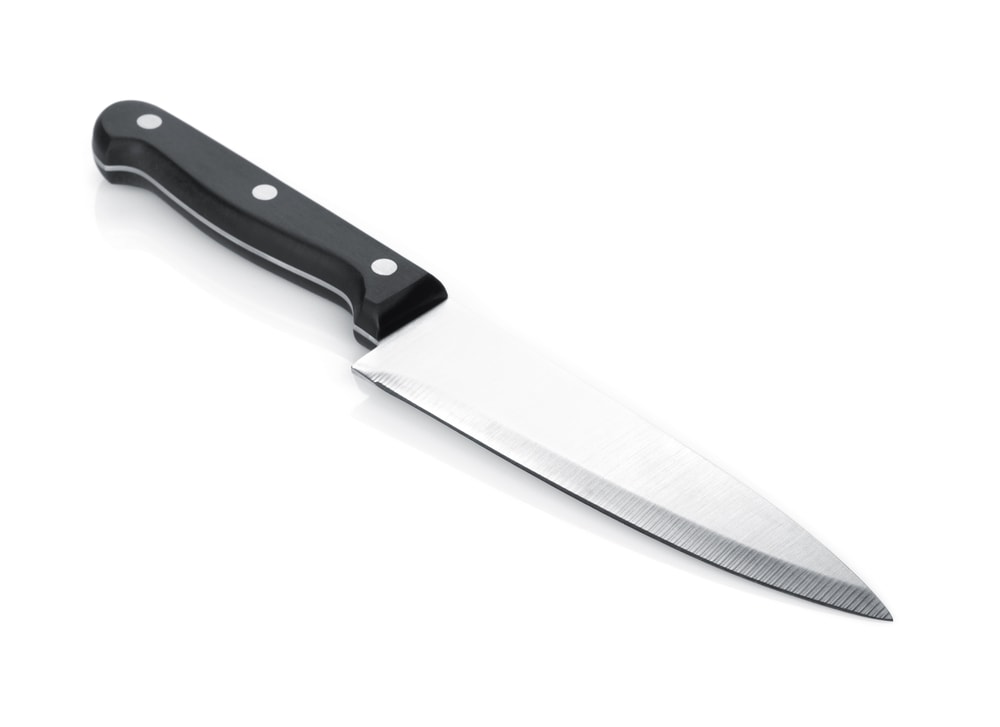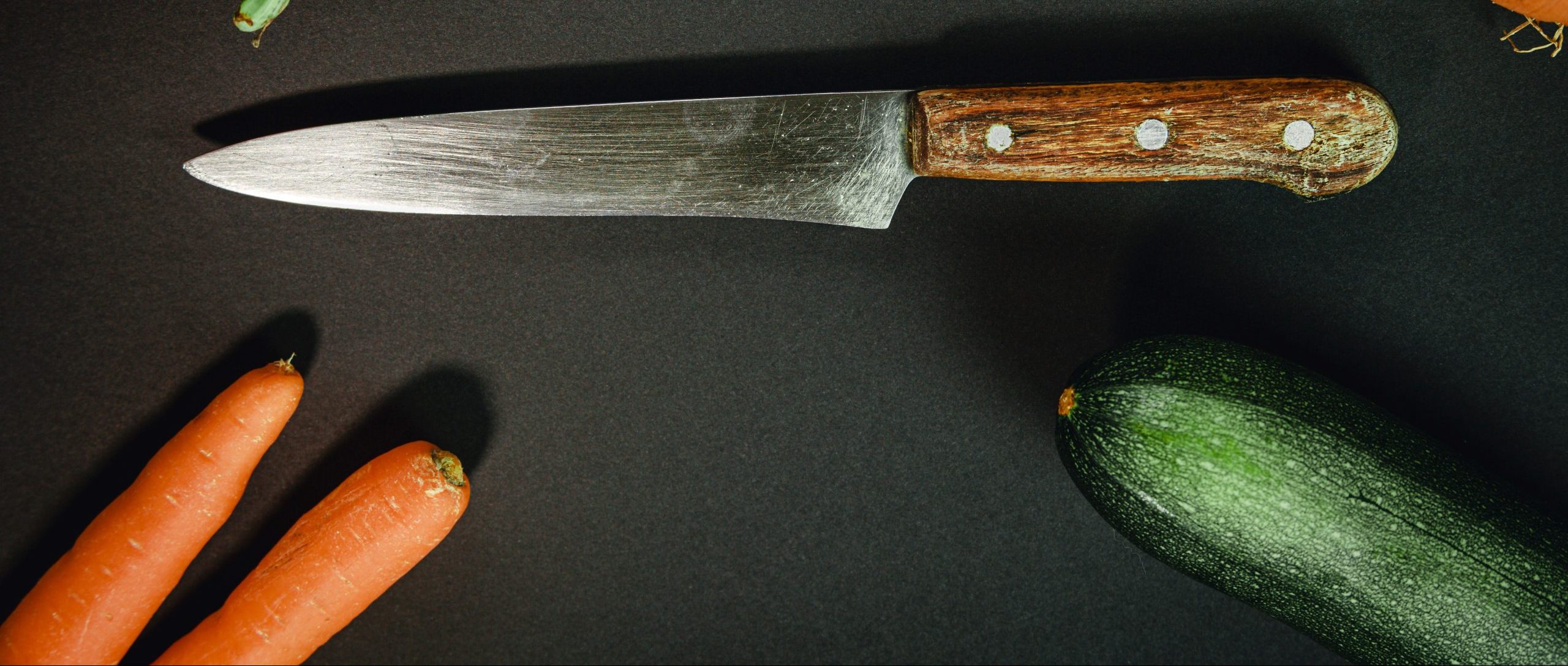You’ve probably thought of this question at least once while chopping vegetables, slicing through bread, or running through your daily meal prep.
It’s the age-old question that all knife users eventually run into no matter what they’re doing.
Which knife is better: a serrated knife or a straight-edge knife?
While you may not find a clear-cut answer right away, it’s important to be clear about your intentions. Getting serious about finding the right blade for the right purpose? Let’s cut right to the chase with the pros and cons of a serrated knife and a straight-edge knife.
Serrated Knife VS Straight Edge Knife
| Small, tooth-like edges on the cutting surface | Smooth edge on the cutting surface |
| Perfect for slice cuts that require you to drag back and forth | Perfect for push cuts that require you to apply pressure downward |
| Cuts into tougher materials easily | Allows you to make accurate cuts with precision |
| Can cause tearing or leave rough edges | Easier to sharpen when the blade becomes dull |
What is a Serrated Knife?
A serrated knife can always be recognized by the small, tooth-like edges protruding from the cutting surface. The design makes it easier for you to create slice cuts or cuts that pierce an outer layer and require you to drag back and forth. Think about the times you’ve prepped foods with a hard surface and a soft interior, like bread or thick meats. You most likely had to break through the exterior before slicing your way down.

Serrated Knife Pros:
- Cuts tougher materials well
- Blade exerts more pressure
- Easy to saw back and forth
Serrated Knife Cons:
- Cuts less precisely and can cause tearing or leave rough edges
- Difficult to sharpen dull serrations, but not impossible
For a strong slice cut, we recommend going with the Wusthof Classic 5” Serrated Utility Knife.
The five-inch blade becomes a versatile tool for any meal prep when it comes to your chopping, mincing, slicing, and dicing needs. With the German forged knife, you can slice through foods with varying textures all while maintaining its quality and sharp saw-like teeth. As a utility knife, it also effortlessly saws through tough materials for manual work such as rope, drywall, or thin wood.
What is a Straight Edge Knife?
This blade has a straight edge that continues into a sharp point. As a beloved kitchen staple, the straight edge works perfectly with push cuts, which focus on easing pressure downward rather than a back-and-forth slicing motion. This blade also gives you the control to move with extreme precision. It’s the ideal knife to use if you want clean slices, like when cutting apples, shaving peels off, or chopping up vegetables.

Straight Edge Knife Pros:
- Produces precise push cuts without a tear
- Sharp edge increases accuracy
- Easy to sharpen a dull sharp blade
Straight Edge Cons:
- Difficult to perform slice cuts
- Cannot cut tougher materials as well
For more refined cuts, we recommend the TUO Straight Edge Utility Knife. The hand-sharpened blades enable you to make precise cuts while using an ergonomic handle for a comfortable grip. You’ll be able to chop up a variety of foods, perform careful shaving, and cut through certain utility materials such as cardboard boxes.
How to Choose Between a Serrated Knife and a Straight Edge Knife
So how do you ultimately pick between a serrated knife and a straight-edge knife?
It all comes down to what you’re using it for. If you find yourself making push cuts, you’ll want to go for a straight-edge knife with its effortless ability to cut foods and materials accurately.
On the other hand, a serrated knife will serve you better for slice cuts with a consistent sawing motion. The teeth will empower you to cut through the toughest of things while exerting less force on your way down.




Post Your Thoughts